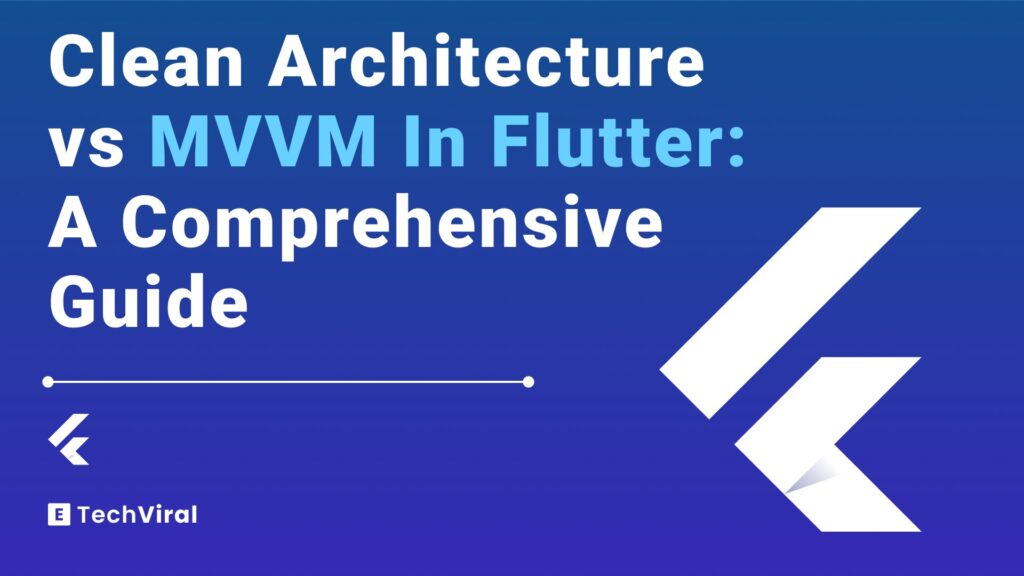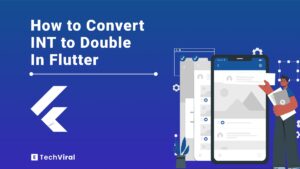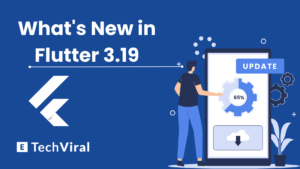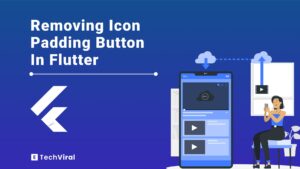We often find ourselves at a crossroads, pondering the best path to architect our apps. Two giants stand tall in this landscape: Clean Architecture and MVVM. But let’s not get lost in the technical jungle without a map! Whether you’re a seasoned Flutter developer or just starting out, understanding the nuances of Clean Architecture vs MVVM in Flutter is like choosing the right tools for crafting your masterpiece.
Why does this matter, you ask? Well, picking the right architectural pattern can make your app not just survive but thrive in the wild, ever-changing world of tech. It’s all about writing code that’s clean, maintainable, and, most importantly, scalable. So, let’s
Understanding Architectural Patterns in Flutter
Before we dive deep into the showdown of Clean Architecture and MVVM in Flutter, let’s set the stage by understanding what architectural patterns really are. Think of architectural patterns as the blueprint for your app’s structure. They’re not just fancy jargon but the backbone that supports your app, ensuring it’s robust, reliable, and ready for whatever changes come its way.
Why Do Architectural Patterns Matter?
Imagine building a house without a blueprint. You might end up with the bathroom in the kitchen (awkward) or the bedroom without a door (even more awkward). Architectural patterns in software development serve a similar purpose. They guide us on how to organize our code, split responsibilities across different parts of the app, and ultimately, make our lives (and the lives of those who inherit our code) a lot easier.
Clean Architecture & MVVM
Clean Architecture
Clean architecture in Flutter is like the Swiss Army knife of architectural patterns. It’s all about keeping your code clean (hence the name) and separated into layers of responsibility. This means your app’s brain (logic) doesn’t get tangled up with what it looks like (UI) or how it stores its memories (data). It’s about adaptability and maintainability. Clean architecture also work well in repositories to build scalable and maintanable applications.
MVVM (Model-View-ViewModel)
MVVM is like having a personal assistant for your app’s UI. This pattern separates your app’s interface (View) from its logic (ViewModel), with the Model holding the data. It’s fantastic for apps where the UI changes frequently because it allows for a more modular and testable codebase.
Why Does This Duel Matters in Flutter?
Flutter, with its rich set of widgets and reactive framework, offers a fertile ground for applying these architectural patterns. Choosing between Clean Architecture and MVVM can significantly impact how you structure your Flutter app, how easy it is to test, and even how well it scales as your app grows.
Clean Architecture vs MVVM in Flutter
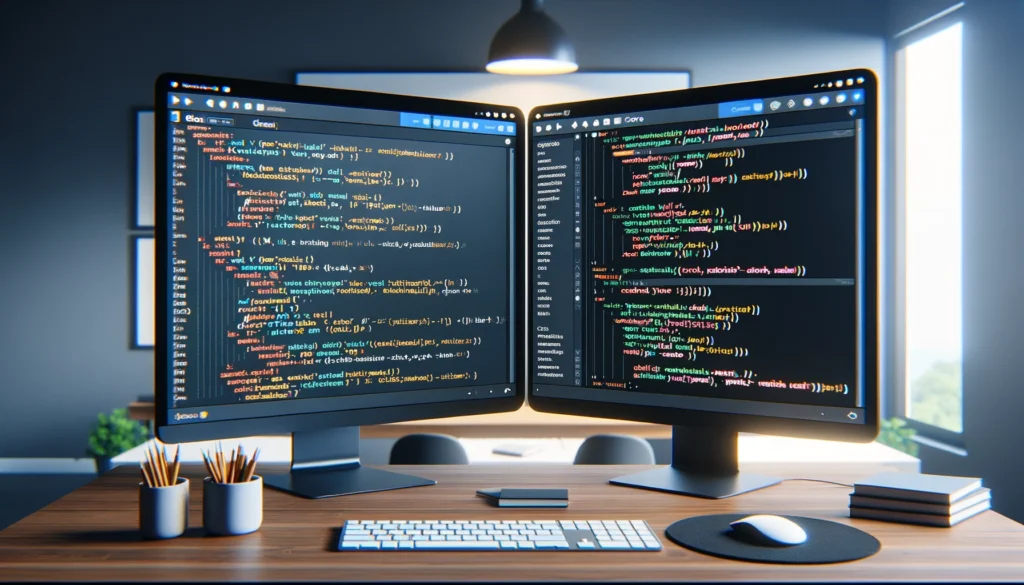
Now that we’ve set the stage with a broad overview of architectural patterns and their significance, it’s time to delve into the heart of our discussion: which is Clean Architecture vs MVVM in Flutter. Let’s break down each pattern to see what they bring to the table.
What is Clean Architecture?
Imagine you’re organizing your workspace. You’ve got your pens in one holder, papers neatly stacked in a tray, and personal items on another shelf. This organization allows you to quickly grab what you need, when you need it, without disrupting the entire desk. That’s Clean Architecture in a nutshell.
- Principles of Clean Architecture: At its core, Clean Architecture aims to separate concerns by dividing the application into layers, each with its distinct responsibility. It’s about independence—your UI can change without affecting the business logic, and your business rules can evolve without changing the database.
- Benefits for Flutter: In Flutter, this means you can swap out your UI (say, moving from Material to Cupertino) without touching the core logic of your app. Testing becomes a breeze since you can isolate each layer. Plus, as your app grows, maintaining it doesn’t have to be a headache.
What is MVVM?
Now, think of your favorite app. The way it responds to your taps, scrolls, and gestures feels almost magical, right? That’s the UI doing its dance with the underlying data and logic. MVVM is the choreographer behind this dance.
- Model-View-ViewModel Explained: MVVM divides your app into three key components: Model (your data), View (your UI), and ViewModel (the mediator between Model and View). This separation allows the View to remain blissfully unaware of the Model directly, communicating through the ViewModel instead.
- Flutter’s Spin on MVVM: Flutter’s reactive framework marries well with MVVM. The ViewModel reacts to changes in the Model, updating the UI through a stream of state changes. This reactive loop makes for a dynamic and responsive user experience, with the added bonus of making your code more organized and testable.
Clean Architecture vs MVVM in Flutter: The Showdown
Structure & Components
Clean Architecture is like a well-organized library, with everything categorized and easy to find. MVVM, on the other hand, feels more like a bustling workshop where creation happens in real-time, guided by the blueprints (ViewModel).
Performance & Suitability
Both patterns aim to enhance performance through organization and separation of concerns. Clean Architecture shines in complex apps requiring rigorous scalability and testability. MVVM excels in apps with a heavy focus on the user interface and user experience.
Flutter Compatibility
Flutter’s widget-centric design fits snugly with MVVM, providing a reactive framework that facilitates state management. Clean Architecture, with its emphasis on separation, ensures that Flutter apps remain scalable and maintainable, regardless of their size.
Making the Right Choice for Your Flutter Project
With the insights into Clean Architecture and MVVM laid out, you might be wondering, “Which one is right for my Flutter project?” The truth is, there’s no one-size-fits-all answer. The best choice depends on various factors, including your project’s complexity, your team’s familiarity with the patterns, and the specific requirements of your app. Let’s navigate through some key considerations to help you make an informed decision. You can also try flutter hooks for cleaner code, That help you organize your code better, making it cleaner and more straightforward.
Also, read Implementing clean architecture with Getx for building scalable and maintaianable applications.
Consider Your Project’s Complexity
- Clean Architecture is often favored for larger, more complex applications where the need for scalability, maintainability, and testability is paramount. If you anticipate your project will grow in complexity, involving multiple teams or requiring a solid structure to manage business logic separately from the UI, Clean Architecture could be your ally.
- MVVM shines in projects where the focus is heavily on the user interface and user experience. It’s particularly useful for apps with dynamic content that require frequent updates to the UI based on data changes. If your project is moderately complex with a strong emphasis on the frontend, MVVM might be the way to go.
Assess Your Team’s Skills and Preferences
- The familiarity of your development team with either pattern can significantly impact your choice. Clean Architecture might have a steeper learning curve due to its layered structure and the discipline required to maintain separation of concerns. If your team is up for the challenge and eager to learn, this could be a rewarding path.
- MVVM might be more intuitive for teams already familiar with reactive programming or those who have worked with similar patterns in other frameworks. If quick UI development and state management are your team’s strengths, leveraging MVVM in Flutter can lead to efficient and productive development cycles.
Match the Pattern with Your App’s Specific Needs
- Consider the future needs of your app. If you anticipate integrating with multiple data sources or foresee complex business logic that might evolve independently of the UI, Clean Architecture provides a robust foundation that can accommodate such growth.
- If your app prioritizes real-time data interactions and user feedback, MVVM’s reactive nature can make it easier to implement and manage dynamic content, enhancing the overall user experience.
Best Practices in Applying Architectural Patterns
Regardless of the pattern you choose, following some best practices can ensure a smoother implementation:
- Stay Consistent: Once you’ve chosen a pattern, apply it consistently throughout your project to reap its full benefits.
- Focus on Testing: Both Clean Architecture and MVVM facilitate testing by separating concerns. Take advantage of this by implementing thorough unit and integration tests.
- Encourage Team Collaboration: Regularly review your architecture choices as a team. Collective understanding and buy-in can significantly impact the successful adoption of the pattern.
- Iterate and Refine: Don’t be afraid to refine your architectural approach as your project evolves. Flexibility can lead to better long-term outcomes.
Conclusion
Choosing between Clean Architecture or MVVM for your Flutter project ultimately boils down to understanding your app’s specific needs, your team’s capabilities, and your project’s long-term goals.
Both architectures offer unique benefits that cater to different scenarios—Clean Architecture excels in complex, scalable applications requiring a high degree of maintainability, while MVVM shines in projects with a strong focus on dynamic user interfaces.
The key to success lies in aligning the architecture with your objectives, ensuring your Flutter app is not only well-structured but also poised for future growth and adaptation. As you delve into the world of Flutter development, remember that the journey is as much about learning and adapting as it is about building.
FAQ’s
Which is best for Flutter projects, Clean Architecture or MVVM?
The choice between Clean Architecture & MVVM depends on your project’s requirements and complexity. Clean Architecture is ideal for large, complex applications requiring high maintainability and scalability. MVVM is better suited for projects with a strong emphasis on the user interface and experiences. The superiority of one over the other hinges on the specific needs of your Flutter project.
How well-suited is Clean Architecture for Flutter applications?
Clean Architecture is highly suited for Flutter applications development, especially those that demand a clear separation of concerns, scalability, and testability. Its layered approach allows for flexible development, easy maintenance, and the ability to adapt to changes over time, making it a strong choice for complex Flutter projects.
Can MVVM be effectively utilized in Flutter development?
A3: Absolutely, MVVM is particularly effective in Flutter development. Its strength lies in managing dynamic UI content and facilitating a reactive connection between the app’s logic and its presentation. This makes MVVM a great fit for Flutter projects that prioritize responsive and interactive user interfaces.
What differentiates MVC from MVVM in the context of Flutter?
The main difference between MVC (Model-View-Controller) and MVVM (Model-View-ViewModel) in Flutter lies in how they handle the business logic and UI layer. MVC separates the application into three interconnected components, with the Controller mediating between the View and the Model. MVVM, on the other hand, introduces a ViewModel that acts as a bridge between the Model and the View, facilitating a more direct synchronization of the UI with the underlying data, which is often more aligned with Flutter’s reactive framework.
How do MVVM and Clean Architecture compare in the context of iOS development?
A5: In iOS development, both MVVM and Clean Architecture offer pathways to creating organized and maintainable applications. MVVM is favored for its straightforward implementation with reactive programming patterns, enhancing UI development and state management. Clean Architecture, while applicable and beneficial in terms of ensuring scalability and testability, might be considered more elaborate due to its emphasis on layer separation. The choice between them should be guided by the complexity of the application and the development team’s familiarity with these patterns.

